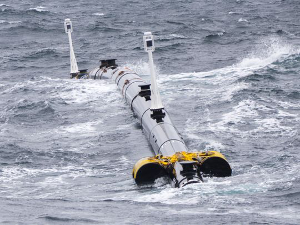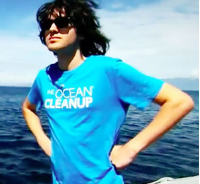|
Ocean Plastic Cleanup Machine Soon to Deploy
August 7, 2018
A giant machine will soon sail out to confront the Great Pacific Garbage Patch. The Ocean Cleanup Project is the name of the initiative and the machine, a 2,000-foot-long combination of pipes and netting designed to remove trash from the ocean. A series of four-foot-diameter closed pipes floats on the ocean surface; below the pipes is a 9-foot-wide net. The idea is that the net captures the garbage but avoids trapping marine life by utilizing the flow of the water itself. An anchor keeps the machine moving slowly and allows the water flow to sort the garbage into the net. The Garbage Patch is growing quickly, a new study says. That study, done in March 2018, concluded that the large concentration of largely plastic trash in the Pacific Ocean was 600,000 square miles in size–twice the size of Texas and weighs 88,000 tons. By the time the garbage-capture machine arrives, the Patch is expected to be even larger. The machine is expected to leave San Francisco on Sept. 8, 2018, accompanied by engineers who will monitor activity from a nearby ship. Deployment will follow initial testing. Solar-powered lights power the machine; and a system of cameras, satellites, and sensors keeps it from colliding with other vessels and also facilitates communication with the nearby engineers. A garbage collection ship will visit regularly to empty the net. A Dutch nonprofit, the Ocean Cleanup Project, is behind the effort. Spearheading the cleanup drive is Boyan Slat, a young Dutch diver who was so appalled at the plastic waste he found while diving off Greece that he vowed to make a difference. Slat and the group plan to have a few dozen ships in operation by 2020. They hope to remove half of the contents of the Garbage Patch by 2023. |
Social Studies for Kids |
Social Studies for Kids
copyright 2002–2019
David White






